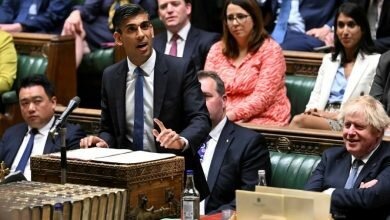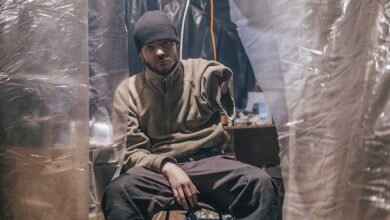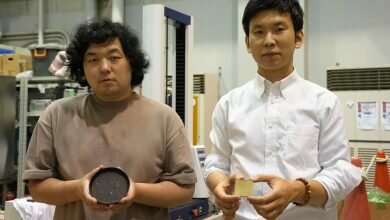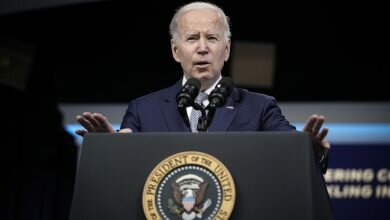US may cite Tesla accidents with automated systems

This October 18, 2019 photo shows the Tesla logo in Salt Lake City. The government plans to soon release data on collisions from vehicles with autonomous or partially automated driving systems that would single out Tesla for the disproportionately high number of such accidents. In the coming days, the National Highway Traffic Safety Administration plans to release the data it has been collecting for almost a year. Last week, the agency said in a separate report that it had documented more than 200 accidents involving Teslas that were using one of the company’s partially automated systems. A number of such Tesla accidents came to light as part of Tesla’s NHTSA investigation on Autopilot that crashed into an emergency and stopped other vehicles along roadways. (AP Photo/Rick Bomer, FILE)
DETROIT (AP) – The government will soon release data on collisions involving vehicles with autonomous or partially automated driving systems, potentially excluding Tesla for the greater number of such accidents.
In the coming days, the National Highway Traffic Safety Administration plans to release the data it has been collecting for nearly a year. The agency said in a separate report last week that it had documented more than 200 crashes involving Teslas using Autopilot, “full self-driving,” traffic-aware cruise control or some of the company’s other partially automated systems. .
Tesla’s figure and its accident rate per 1,000 vehicles were significantly higher than similar numbers for other automakers, which provided such data to the Associated Press prior to NHTSA’s release. Tesla’s number of collisions was revealed as part of Tesla’s NHTSA investigation on Autopilot that crashed into an emergency and other vehicles stalled along roadways.
Tesla has many more vehicles with partially automated systems on American roads than other automakers — about 830,000, dating from the 2014 model year. And it collects real-time data from vehicles online, so it has a very fast reporting system. Conversely, other automakers must wait for reports from the field and sometimes go unnoticed about the crash for months.
In a June 2021 order, NHTSA asked more than 100 automakers and automatic vehicle tech companies to report serious accidents within one day of learning about them and to disclose less-serious accidents by the 15th of the following month. asked for The agency is assessing how the systems perform, whether they endanger public safety and whether new rules may be needed.
General Motors said it reported three accidents while its “Super Cruise” or other partially automated systems were in use. The company said that it has sold over 34,000 vehicles with Super Cruise since its launch in 2017.
(advertisement)
Whether you are looking to learn the basics of futures or are an experienced vet looking to hone your trading skills, our technical analysis guide has everything you need to be successful in today’s futures markets. !
Nissan, using its “Propilot Assist” with more than 560,000 vehicles on the road, was not required to report any accidents, the company said.
Stelantis, formerly Fiat Chrysler, said it reported two crashes involving its system. Ford reported Zero including its “Blue Cruise” driver-assistance system, which went on sale in the spring, though Ford would not say whether there were crashes with the less-capable system.
GM said the three crashes were not Super Cruise’s fault. A spokesman said it also reported two accidents that occurred prior to the June 2021 order.
Several automakers and tech companies, including Toyota and Honda, declined to release their numbers before the NHTSA data surfaced.
A message was left asking for comment from Tesla, which has disbanded its media relations department. NHTSA would not comment on the data Tuesday.
Prince Prince, a professor of electrical and computer engineering at Carnegie Mellon University who studies automated vehicles, said he wouldn’t be surprised if Tesla was found to have a significant number of accidents involving its driver-assistance systems. Tesla, based in Austin, Texas, stopped using radar in its systems and instead relies entirely on cameras and computers – a system Prince calls “inherently insecure.”
He said that the system’s computer can only recognize what is in its memory. Flashing lights on an emergency vehicle, Prince said, could confuse the system, as computers haven’t seen before.
“Emergency vehicles can look very different from all the data on which the Tesla software was trained,” he said.
In addition to publicly released crash data, NHTSA has sent investigation teams into more incidents involving Teslas using electronic systems than other automakers. As part of a larger investigation into accidents involving advanced driver assistance systems, the agency has dispatched teams to 34 accidents since 2016 in which the system was believed to be in use. According to the NHTSA document, Tesla was involved in 28 of the 34 accidents.
NHTSA said in the documents that it had received 191 reports of accidents involving Tesla on Autopilot and non-emergency vehicles, as well as 16 more involving parked emergency vehicles or with warning lights, for a total of 207. Of the 191, the agency removed 85 because of the action. of other vehicles or insufficient data to make a definitive assessment of accidents. There are 106 survivors who were included in the autopilot test.
It was unclear whether the 207 corresponded to the total number of Tesla accidents reported to NHTSA under the order. An NHTSA spokeswoman would not comment.
The agency ordered automakers and tech companies to report crashes involving driver-assist systems, as well as fully autonomous driving systems.
Defending its partially automated system, Tesla has said that Autopilot and “full self-driving” cannot self-drive, and that drivers must be prepared to intervene at all times. Systems can keep cars in their lane and away from other vehicles and objects. But in documents released last week, NHTSA questioned whether human drivers could intervene fast enough to prevent accidents.
Tesla’s “full self-driving” is designed to complete a route on its own with human supervision, with the ultimate objective of being self-driving and operating a fleet of autonomous robo-taxis. In 2019, Musk pledged to run robo-taxi in 2020.
Tesla’s Autopilot driver-assist system detects the hands on the steering wheel to make sure drivers are paying attention. But that is insufficient, said the prince. In contrast, systems like GM monitor a driver’s eyes with a camera, he said, to make sure they’re looking ahead.
Should You Invest $1,000 in Toyota Motor Now?
Before you consider Toyota Motor, you might want to hear this.
MarketBeat tracks Wall Street’s top-rated and best-performing research analysts and the stocks they recommend to their clients on a daily basis. MarketBeat has identified five stocks that top analysts are quietly whispering to their clients to buy before the broader market catches on… and Toyota Motor wasn’t on the list.
While Toyota Motor currently has a “Buy” rating among analysts, the top-rated analysts consider these five stocks to be better buys.
View 5 Stocks Here
Companies mentioned in this article
Compare These Stocks Add These Stocks to My Watchlist
